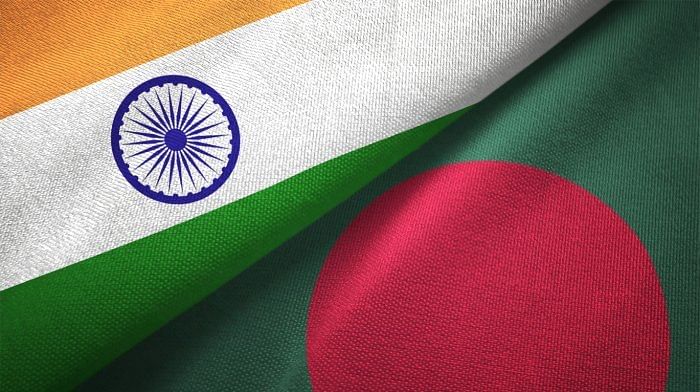
Last year, Bangladesh Foreign Minister A K Abdul Momen said that he is looking forward to a day when Bangladeshis and Indians will not need visas to visit each other's countries. "Our relationship is written in blood, and we want to deepen it. I am waiting for the day when people from both countries can travel without visas," Momen said at an event commemorating Bangladesh and India's 50-year diplomatic connection. But is it at all feasible to set up a visa-free regime at the Indo-Bangladesh border?
According to India's ministry of tourism's 'India Tourism Statistics at a Glance 2021' report, Bangladesh accounted for 23.6 per cent of overall foreign tourist visits to India. In India's 28 international airports and five cruise terminals, citizens from 171 countries could apply for e-visas. That list does not include Bangladesh. So, in terms of achieving a visa-free regime, the two countries can start by first implementing the e-visa arrangement.
E-visa services are provided online, and an Electronic Travel Authorisation is issued quickly, within 24 hours of receipt of the application in 90 per cent of the cases. In response to a query in Parliament, Union Minister of State for Home Affairs Nityanand Rai said that e-visas are granted after considering security, inbound tourism, investments, bilateral relations, and other factors. Given the current robustness of the Indo-Bangladesh bilateral ties, the two countries can elevate their rapport by first allowing the e-visa arrangement for both countries' citizens and then gradually moving towards a visa-free regime.
Also read: New thrust in ties with Bangladesh needed
The Indo-Myanmar border arrangement is something the two sides can study. The Indo-Myanmar border has a one-of-a-kind agreement called the Free Movement Regime (FMR). India has a 1,643-kilometer border with Myanmar, which is unique in many ways since it allows individuals residing within 16 kilometres of the border to travel freely. They can stay for up to 72 hours if they have valid and effective permits from the relevant authorities on both sides. While the FMR has assisted the tribes in maintaining their long-standing links, it has also evolved into a system in which community-level contacts between citizens of the two countries have helped diminish unlawful trespassing along the border.
If a free movement regime is set up between India and Bangladesh, this could be particularly beneficial for India's Northeastern states. The Northeast borderland is characterised by high mountains, deep river channels, and dense forest. As a result of the difficult terrain, the border area is sparsely populated and economically disadvantaged. An FMR arrangement, particularly along the hill bound Indo-Bangladesh border, can help facilitate communications and upgrade the living standard of the people in these regions. Further, new visa regulations will significantly improve trade relations between Northeast India and Bangladesh.
Finally, due to obvious security concerns between India and Bangladesh in their border areas, it won't be possible to implement visa-free access for both countries' citizens quickly. But instead, it can be implemented in phases. Bangladesh's former high commissioner to India, Syed Muazzem Ali, has said the first step towards implementing a visa-free regime between the two countries could be achieved by allowing citizens over the age of 65 to travel without a visa and immediately receive a visa valid for five years. Patients and minor children will benefit from such a step, and gradually, this facility could be extended to citizens of other age groups.
The South Asia region is home to almost one-fifth of the world's population, but the South Asian Association for Regional Cooperation (SAARC) is the only multilateral arrangement that links the countries of the region. In 2018, the SAARC's Core Group on Immigration Authorities and Visa Expert proposed simplifying the SAARC Visa Exemption Scheme and developing security software for use throughout the region. But due to the global Covid surge, that could not be initiated.
As recently as 2021, a special committee was formed by India and Bangladesh to focus on the reforms required to put the no-visa policy into effect. Authorities from both countries have repeatedly stated that implementing such an arrangement is possible. But due to impending security reasons, it might take up to 10 years to implement a full-fledged visa-free regime between the two countries.
At present, India is dealing with a grotesque political philosophy, a popular and influential philosophy that has spoken passionately about Akhand Bharat for decades. From Kabul to Burma, India had a civilisation that spanned the continent. Ironically, authorities are wary of the notion of uniting Akhand Bharat through the unrestricted movement of SAARC nationals across the region.
(The writer is an independent researcher of South Asian affairs)
Disclaimer: The views expressed above are the author's own. They do not necessarily reflect the views of DH.